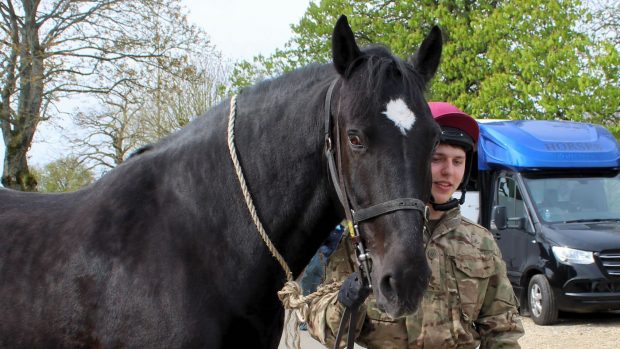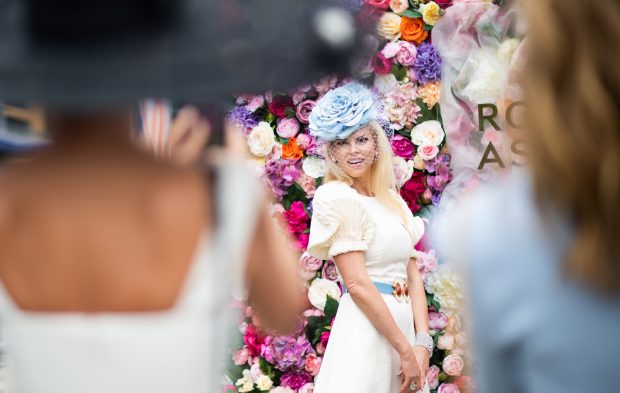H&H spent the day with Thames Valley Police Mounted Section at last week's Royal Ascot to get a taste for their varied duties, from escorting The Queen, to crowd control on Ascot High Street
For Thames Valley Police Mounted Section, Royal Ascot is a game of two halves. Shortly before 2pm on the five days of racing (14-18 June 2016), their team of horses can be seen discreetly escorting The Queen and her guests down the racecourse.
Fast forward to 5pm and they are in position on Ascot High Street to take on the punters who have overindulged in champagne, brawling with high heels in hand.
H&H headed to Royal Ascot on day one of the meeting, to get a glimpse of their duties in action.
What is the mounted section’s job at Royal Ascot?
“When you’re the sergeant in charge you’re thinking about The Queen’s security as well as your own team,” says Sergeant Spencer Kervin.
“You have to gauge the level of threat and brief the team accordingly.
“Last year we had someone trying to push their bike across the course just as The Queen was coming, or we’ve had a German Shepherd dog for the disabled jumping off its stand just as the carriage was coming. If it had gone under the wheels of the carriage or a horse, it could have been a major incident.
“There’s a lot to be ready for. At the one furlong marker the band strikes up with the National Anthem which can be alarming for the horses, you’re looking for anyone running out on the course, or you can have hats blowing off in front of you,” Spencer adds, who is riding Caesar this week, a horse who is “well used to the crowds”.
A pair of the horses are waiting at the Golden Gates at the entrance to the racecourse to pick up the procession, another pair wait at the four furlong mark and there is a third pair at the winning posts.
“There is the potential for six horses to close in on The Queen’s carriage if there is a security breach,” says Spencer.
“Of course our role depends what the threat is. If it’s someone with a gun or knife, they are likely to be taken out by a sniper, whereas if it is someone with flags, eggs or flour the mounted section will come into play to stop them. But it is about proportional response.”
Prior to their moment in the spotlight with The Queen, a pair of horses sets off at 10.30am to trace the route The Queen and her guests take from Windsor Castle on a “search”, looking for “anything out of the ordinary”.
They step down from that role at 2.30pm.
The horses have some time out back at the lorries until the end of racing when their next duty is to escort The Queen and other “significant” royals out of the stands.
The evening sees the team change out of their “number one dress”, to take to Ascot High Street for public order duties — which escalate on the Friday and Saturday night, as the crowds grow.
How important is Royal Ascot in the calendar for the mounted section?
“Escorting The Queen is a big thing for Thames Valley Police,” says Jackie Latham, who has been grooming for the section for 12 years and for whom polishing and cleaning preparations start a month before the meeting. “It’s a long week, but for the new horses in particular, it is the pinnacle of the year.”
“I can honestly say that all the hairs on the back of my neck stand up when I am doing this job,” adds Spencer.
“It’s an immensely proud moment but you also have to be switched on because this could be the moment that someone wants to make a point. And there is also the threat to the armed forces and police in the current climate that we have to be aware of.”
What does their everyday work involve and where are Thames Valley Mouted Section based usually?
While the team set up camp at a local livery yard on the edge of Windsor Great Park for Royal Ascot week, home is Milton Keynes where there are stables for the 10 horses, an all-weather arena and some access to turnout from The Parks Trust which horses can be rotated on at points throughout the summer.
“Eighty per cent of the work is community based,” says PC Tim Pollock who has been with the section for 11 years. “The horses can be stabled 24/7 so they are taken on patrol for three-to-four hours a day to exercise them. On a day-to-day basis we are going into communities trying to disrupt crime trends in a non-confrontational role. The aim is to break down barriers.
“People don’t often stop to talk to a police officer on the ground, but that’s not he case with horses — it’s a great opportunity to spark up conversation and glean information. It could be the last piece in the jigsaw.”
What sort of horses do the mounted section look for?
“The perfect age is between six and eight,” says PC Louisa Watson. “But we do buy them as young as four — it depends on how much time we have to bring them on.
“Their career tends to last around five-to-six years, but one of our horses Clyde was bought rising four and retired to the Horse Trust at 21.”
“The preferred size of the horse is down to the sergeant — the current one doesn’t like anything less than 16.3hh. We have a mixture of heavy horses and some lighter crosses. The finer horses are harder to find with the right mind but they tend to cope with the work better. They are more nimble and don’t tend to suffer with the same back and leg problems as the heavier horses.”
“Temperament is crucial,” adds Tim. “Horses are taken on a minimum six week trial to see if they are the right type, but even once we have parted with the cash, 20% still don’t make it.
“Sometimes there are traits that you can work with, and sometimes there just aren’t. You have to make an informed decision.”
How do you end up in the mounted section?
It normally takes around six years of operational duties before a police officer can move into the mounted section. Around 50% of people who decide to go into the section have an equestrian background, but regardless of experience, everyone must undertake a 16-week riding course.
For PC Laura Webb, it took 11 years to secure her dream job with the mounted section.
“The opportunity only came up three times in those 11 years, and I eventually got the job on my third attempt,” says Laura, who events at pre novice level.
Like this? You might also enjoy reading these:
Inspired by Royal Ascot? Don’t miss the first race next year with these dream properties
8 types of Royal Ascot racegoer you are sure to recognise this week
“There is a lot of weekend working with this role, which can make it difficult for eventing. People often ask if I’m horsed out, but I say that getting on my horse at home is like getting in a nice car.
“I also find the police work really useful for my own riding, because it gets me used to riding lots of different types of horses.
“I did public order duties for years as a foot officer and I’d much rather be on a horse. Moving crowds for one is so much easier — you can do the work of a large number of officers with one horse.
“Ascot is a real highlight of this job,” adds Laura. “It shows what a diverse role this is — combining both the ceremonial and public order aspects.”




